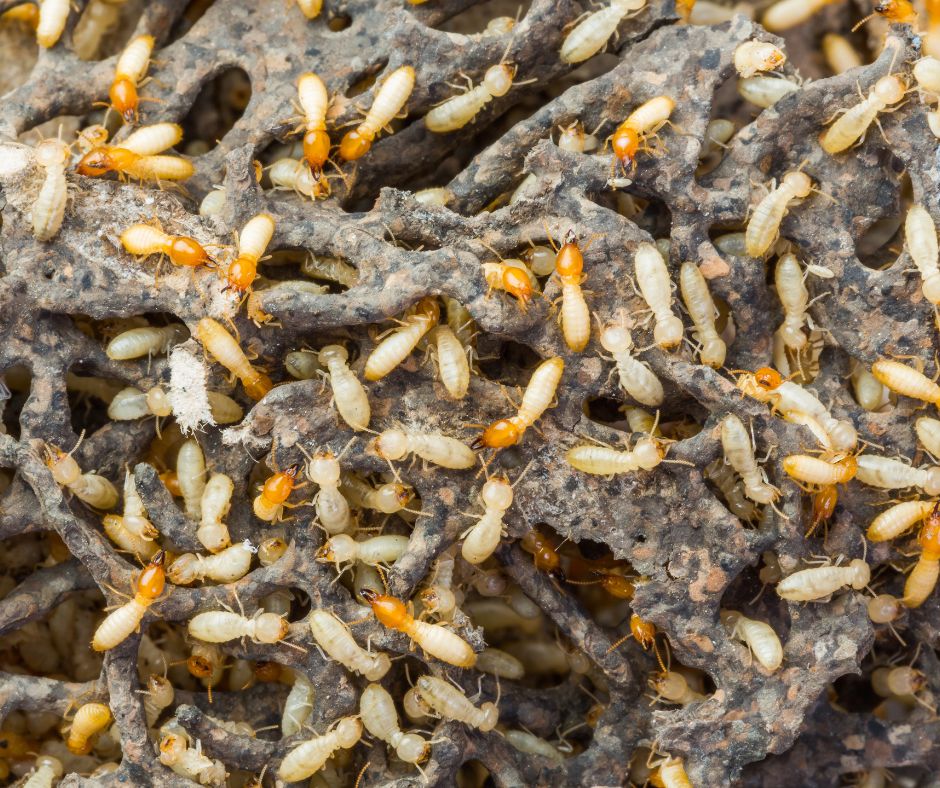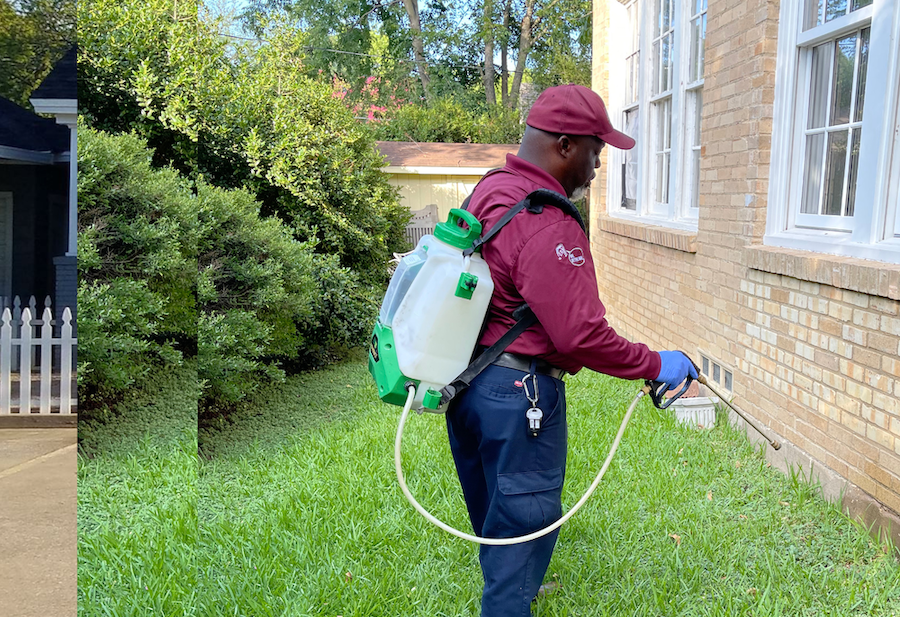Professional Mosquito Control Services for a Relaxed Outdoor Living Space
Learn More About the most recent Breakthroughs in Parasite Control and Exactly How to Implement Effective Therapy Solutions
Recently, the field of insect control has actually witnessed considerable innovations, driven by the demand for efficient and sustainable treatment options. Innovative methods such as Integrated Pest Management (IPM) incorporate green practices with advanced modern technology, boosting both efficiency and ecological duty. The integration of wise innovations and DIY approaches has equipped individuals to take on bug problems more successfully. As we discover these advancements, it ends up being important to understand how best to execute these techniques in various settings to attain optimum outcomes. The implications for pest management practices could be transformative.
Eco-Friendly Parasite Control Options
Over the last few years, the demand for eco-friendly insect control alternatives has actually surged as services and homeowners alike seek lasting options to standard chemical treatments. This change is driven by growing environmental awareness and a desire to decrease the health and wellness threats associated with synthetic chemicals.

Environment-friendly insect control techniques incorporate a variety of methods that focus on making use of natural materials and practices. Integrated Insect Administration (IPM) is one such technique, incorporating organic, cultural, and mechanical methods to manage bug populations while reducing dependence on chemicals (Wildlife removal services). This all natural approach stresses prevention through habitat control and the intro of natural predators, consequently fostering a well balanced ecological community
An additional popular alternative is the use of botanical chemicals originated from plants, which often tend to be less dangerous to non-target organisms. Products like neem oil and diatomaceous planet have gotten traction for their performance in regulating bugs while posturing very little dangers to human health and the setting.
Furthermore, exemption techniques, such as securing entrance points and keeping cleanliness, play a vital duty in eco-friendly parasite management. By adopting these sustainable practices, companies and people can successfully manage pests while advertising a much healthier planet for future generations.
Smart Modern Technology in Parasite Monitoring
Innovation is reshaping the landscape of bug administration, with clever modern technology becoming a crucial force in improving effectiveness and efficiency - Wildlife removal services. The assimilation of Net of Points (IoT) devices, fabricated knowledge (AI), and information analytics is revolutionizing just how insect control professionals approach infestations
Smart traps equipped with sensors can identify insect task in real-time, sending immediate alerts to drivers. This enables timely actions, lessening damage and decreasing the need for extensive therapies. Additionally, AI formulas examine historical data to forecast bug habits, allowing proactive treatments based upon environmental problems and problem patterns.
Drones and automatic cars are also playing a substantial function in pest administration, providing airborne evaluations of large locations, determining hotspots, and even dispersing targeted treatments. These technologies not just streamline procedures yet additionally boost security by limiting human direct exposure to possibly hazardous chemicals.
Furthermore, mobile applications equip consumers to keep an eye on insect activity and gain access to expert recommendations, fostering a joint method to pest management. Generally, the adoption of wise modern technology is setting a brand-new standard in bug control, emphasizing data-driven choices and sustainable methods that ultimately profit both homeowners and experts alike.
Integrated Parasite Management Approaches
Integrated Insect Administration (IPM) uses a holistic method to pest control, incorporating various methods to properly manage insect populations while decreasing risks to human health and wellness and the atmosphere. IPM focuses on understanding the pest life cycle, their natural opponents, and the ecosystem in which they thrive.
One of the essential elements of IPM is monitoring pest populations with routine assessments and information collection. This permits the recognition of parasite thresholds, identifying when intervention is required. Cultural practices, such as crop hygiene, turning, and environment control, are necessary in lowering parasite frequency and advertising plant wellness.
Mechanical controls, consisting of traps and barriers, are additionally essential in IPM. These methods can physically get rid of or deter pests without the use of chemicals. When essential, the wise application of chemical controls is utilized, focusing on targeted therapies that lessen burns pest control ecological impact.
Education and learning and cooperation amongst stakeholders, consisting of farmers, insect control professionals, and the area, are vital for the successful implementation of IPM strategies. By focusing on lasting practices, IPM not just addresses pest problems yet additionally cultivates a healthier ecosystem.
Biological Control Approaches
Various organic control approaches are progressively recognized for their performance in handling parasite populations while advertising ecological equilibrium. These techniques harness all-natural predators, bloodsuckers, and pathogens to lower pest numbers without relying on artificial chemicals. For instance, the introduction of ladybugs can properly manage aphid populations, while nematodes target soil-dwelling insect larvae.
Furthermore, making use of microbial chemicals, such as Bacillus thuringiensis (Bt), provides an eco-friendly alternative for handling caterpillar insects. These items especially target pest species, lessening harm to advantageous insects and pollinators. Preservation organic control stresses enhancing habitats for natural opponents, such as birds and valuable insects, thus motivating their existence in farming systems.
Study remains to disclose cutting-edge strategies see here within this field, such as using pheromones to interfere with pest mating patterns or the development of biocontrol agents through genetic engineering. Carrying out these approaches can lead to sustainable pest management practices that reduce the dependence on chemical treatments, inevitably cultivating much healthier ecological communities. As recognition of these methods expands, they are ending up being important elements of integrated insect management (IPM) methods, supplying an equilibrium between effective pest control and ecological stewardship.
DIY Pest Control Solutions
As homeowners look for efficient methods to tackle bug problems, DIY pest control remedies have actually gotten popularity for their availability and cost-effectiveness. These techniques empower people to attend to invasions using readily available products and techniques, usually without the need for expert treatment.

Furthermore, preserving proper hygiene and regular examinations can protect against bug entrance and nesting (Wildlife removal services). Easy techniques, such as securing splits, eliminating food sources, and decluttering, can significantly lessen bug populations. Catches, both homemade and readily readily available, can likewise offer reliable services for monitoring and managing certain bugs like insects or rats

Conclusion
The assimilation of eco-friendly bug control alternatives, smart innovation, and innovative administration approaches presents a detailed strategy to effective insect monitoring. By accepting Integrated Pest Management (IPM) and using organic control approaches, alongside DIY services, liable and lasting pest control can be accomplished.
Environment-friendly parasite control approaches include an array of approaches that prioritize the use of natural substances and practices. Integrated Insect Monitoring (IPM) is one such strategy, combining organic, cultural, and mechanical strategies to handle bug populaces while minimizing dependence on chemicals. As awareness of these techniques grows, they are becoming essential elements of integrated insect management (IPM) approaches, supplying an equilibrium in between efficient bug control and environmental stewardship.
The integration of environmentally friendly insect control choices, wise technology, and innovative management approaches offers a detailed technique to efficient insect management. By welcoming Integrated Bug Administration (IPM) and utilizing organic control approaches, together with DIY solutions, responsible and lasting bug control can be achieved.